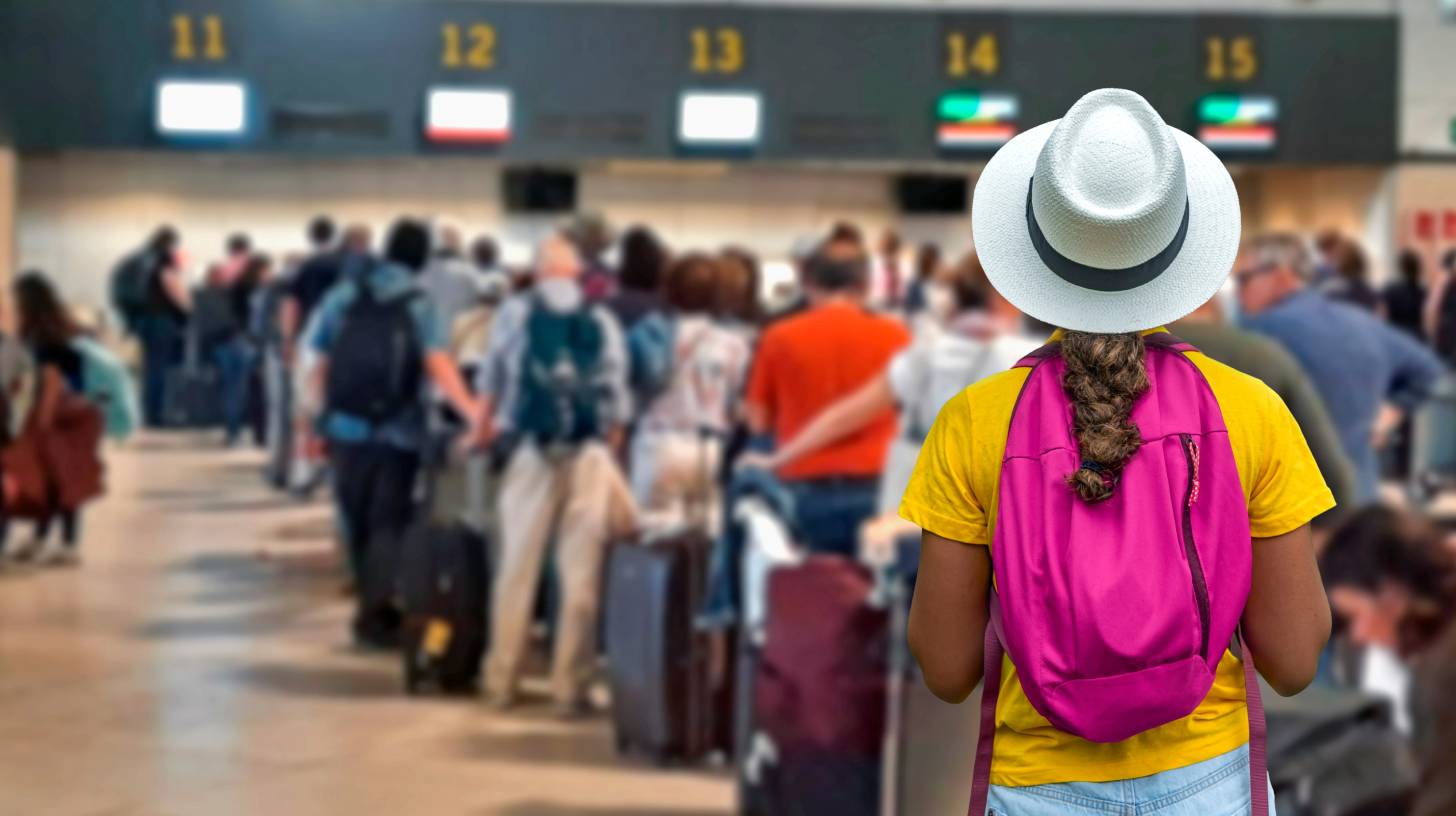
Passenger flows are often defined by bottlenecks like long check-in queues, slow security lanes, delayed boarding, and misconnected missed flights. These delays frustrate travellers and increase operational costs while straining airport resources.
Airport inefficiencies at critical passenger touchpoints are unsustainable as global passenger traffic is only projected to increase. Innovative passenger processing technologies, including biometrics, predictive analytics and more are being deployed to address these recurring bottlenecks. Here are 5 of the most common delays they resolve, and what is driving their deployment globally.
1. Long check-in and bag drop queues
The role of self-service kiosks, bag drop automation, and mobile check-in is to reduce the role of the counter and travel time for check-in baggage customers and to provide benefits to their staff workloads. Studies on adoption show that self-service usage of systems increases throughput, but the adoption varies by passenger segment.
2. Bottlenecks at security and immigration
Biometric check-ins and pre-enrolment have the potential to alleviate the need for manual ID checking and speed up the lanes. Passengers often suggest that the key improvement they’re looking for at any airport is reduced queues to their boarding location.
3. Boarding delays from manual identity checks
Biometrics and facial recognition led check-in eliminates re-check at gates before boarding ID checks. This enables faster boarding and shorter queues.
4. Delays from limited flight-to-flight visibility
Staff can reduce missed-connection rates by improving visibility of passenger-to-baggage tracking systems along with flight operational status in real-time. This allows passengers to re-book connections in advance and minimise prolonged queues, streamlining interoperable workflows.
5. Recovery time after system outages or disruption
The outage of the lanes at the borders of the international guests’ arrival and e-Gate lanes demonstrate the need for robust fallback processes and surge staffing plans.
It must be noted that tech alone cannot replace the human workforce. AI and automation can simplify most manual tasks so ops teams and stakeholders can focus on taking prompt action to reduce downtime, avoid potential pitfalls and oversee operations while tech digitally transforms them.
Why WAISL
WAISL brings next-gen passenger processing not as a mere product but as an operational capability combining biometrics, kiosk fleets, identity services and orchestration layers.
This reduces friction at touchpoints and recovery times even if something goes wrong.
Interested to learn more? Reach out to us today.

